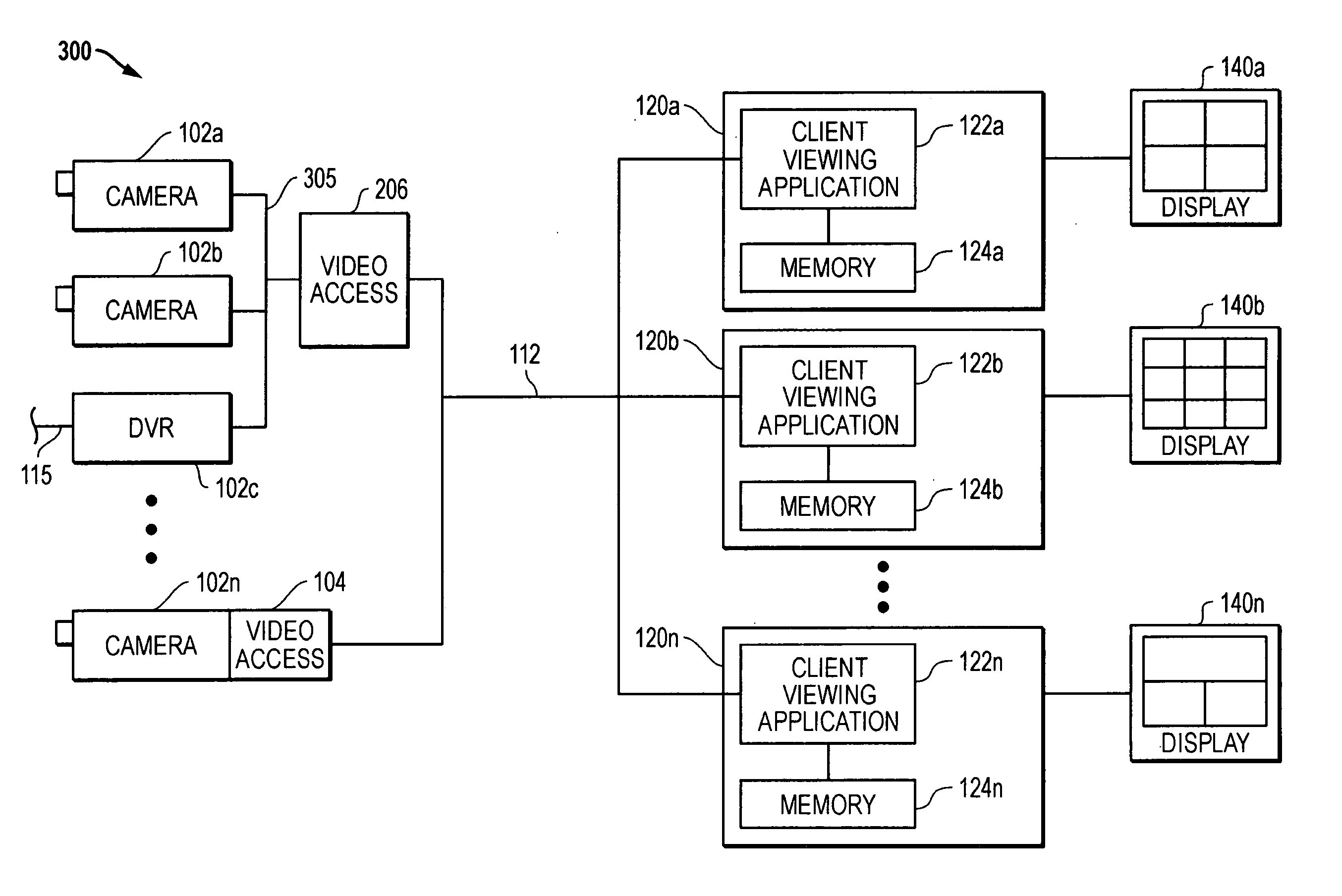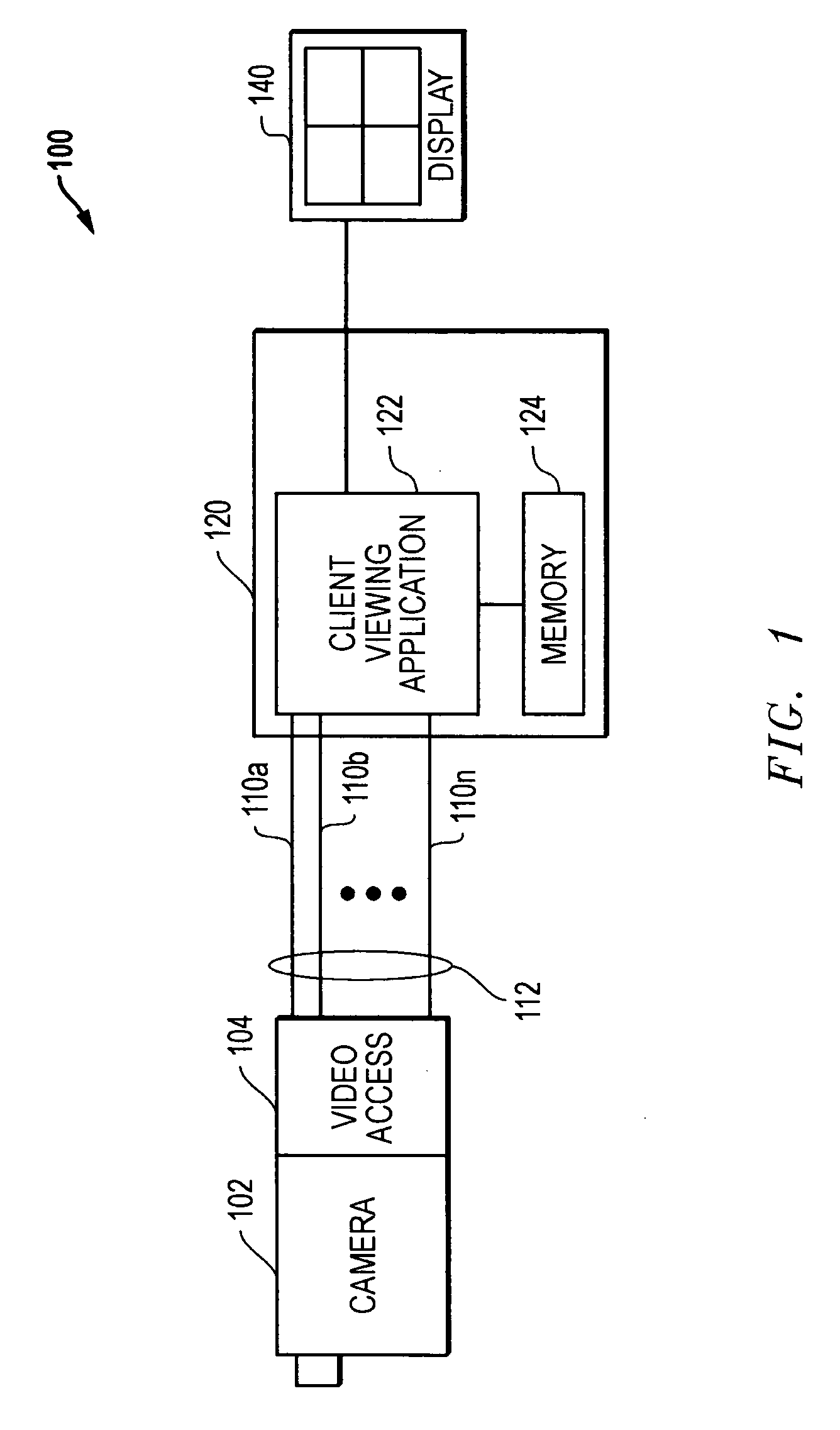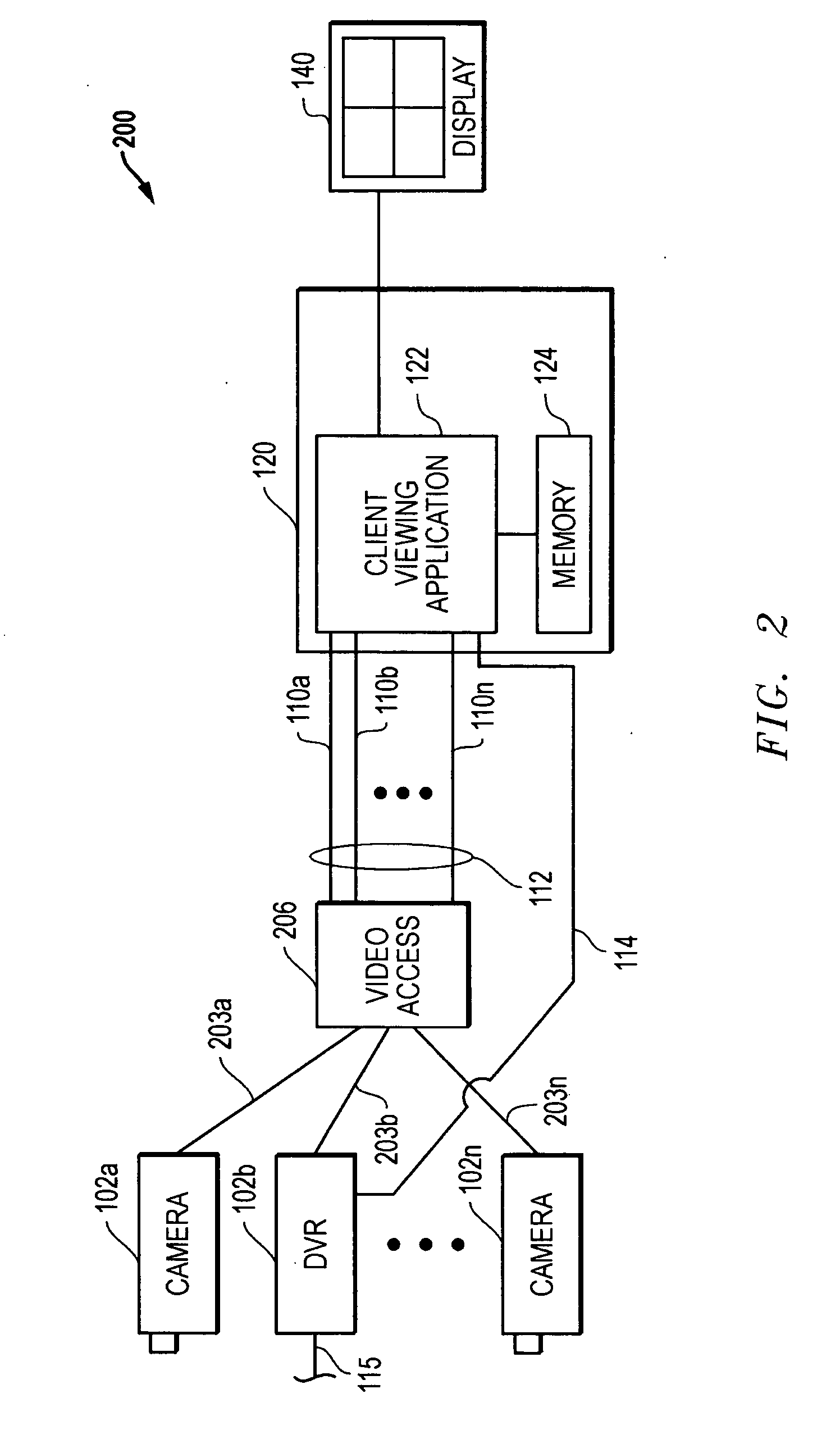Systems and methods for providing high-resolution regions-of-interest
a high-resolution, region-of-interest technology, applied in the field of video streams, can solve the problems of fixed resolution/rate video sources, viewer's inability to adapt the video source to its environmental constraints, and significant problems, and achieve the effects of less video compression, enhanced color format, and improved resolution
- Summary
- Abstract
- Description
- Claims
- Application Information
AI Technical Summary
Benefits of technology
Problems solved by technology
Method used
Image
Examples
Embodiment Construction
[0048]FIG. 1 shows a simplified block diagram of a video delivery system 100 as it may be configured according to one embodiment of the disclosed systems and methods. In this exemplary embodiment, video delivery system 100 includes a video source component or video source device (VSD) 102, a video access component 104, a viewing client 120, and a video display component 140. With regard to this and other embodiments described herein, it will be understood that the various video delivery system components may be coupled together to communicate in a manner as described herein using any suitable wired or wireless signal communication methodology, or using any combination of wired and wireless signal communication methodologies. Therefore, for example, network connections utilized in the practice of the disclosed systems and methods may be suitably implemented using wired network connection technologies, wireless network connection technologies, or a combination thereof.
[0049] As shown...
PUM
 Login to View More
Login to View More Abstract
Description
Claims
Application Information
 Login to View More
Login to View More - R&D
- Intellectual Property
- Life Sciences
- Materials
- Tech Scout
- Unparalleled Data Quality
- Higher Quality Content
- 60% Fewer Hallucinations
Browse by: Latest US Patents, China's latest patents, Technical Efficacy Thesaurus, Application Domain, Technology Topic, Popular Technical Reports.
© 2025 PatSnap. All rights reserved.Legal|Privacy policy|Modern Slavery Act Transparency Statement|Sitemap|About US| Contact US: help@patsnap.com



